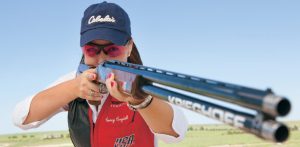How to Visually Focus on a Clay Target
Visual focus in clay target shooting is not just about spotting the target; it involves a complex interplay of eye movements, depth perception, and anticipation skills. Experienced shooters develop an ability to track the target’s movement instantly from the moment it is released. This requires an understanding of the target’s launch angle and speed, allowing shooters to position themselves for the best shot. By focusing on these aspects, shooters can significantly improve their chances of hitting the target consistently.
Key Techniques to Improve Visual Focus
Improving visual focus in clay target shooting begins with mastering the art of target acquisition. This involves quickly identifying the target as it emerges and maintaining a steady visual lock throughout its flight. A helpful technique is to keep both eyes open, which enhances depth perception and provides a wider field of view. This binocular vision allows shooters to track the target’s movement more effectively, reducing the chance of losing sight of it amid distractions.

Another crucial technique is practicing smooth eye movements. Jerky or abrupt eye movements can cause a shooter to lose track of the target, leading to missed shots. Instead, shooters should practice tracking the target with steady, fluid eye movements, similar to how one would follow a moving object in the distance. This technique enhances the shooter’s ability to maintain visual contact with the target until the moment of firing, improving overall accuracy.
Pre-visualization is a powerful technique that involves mentally rehearsing the target’s flight path before it is launched. By visualizing the trajectory and practicing the eye movements required to track it, shooters can prepare their minds and bodies for the actual shot. This mental preparation helps shooters react more instinctively during the actual shooting, reducing reaction time and increasing the likelihood of hitting the target.
The Role of Eye Exercises in Target Accuracy
Eye exercises play a significant role in enhancing visual focus and accuracy in clay target shooting. These exercises are designed to strengthen the eye muscles, improve coordination, and increase the speed of eye movements. One effective exercise is the near-far focus drill, where shooters practice shifting their focus between a nearby object and a distant one. This exercise trains the eyes to quickly adjust focus between the gun sight and the moving target.

Peripheral vision exercises are also beneficial, as they enhance a shooter’s ability to detect movement outside of their direct line of sight. Practicing with peripheral vision can improve awareness of the target’s surroundings, allowing shooters to anticipate changes in the target’s flight path more effectively. This broader awareness can make a significant difference in quickly acquiring and maintaining focus on a fast-moving target.
Additionally, exercises that enhance visual memory and target recognition can improve a shooter’s ability to quickly identify and track targets. By training the brain to recognize and remember target patterns, shooters can react more quickly and accurately during shooting sessions. Regular practice of these eye exercises can lead to improved visual focus, quicker reflexes, and ultimately, greater success in hitting clay targets.
Common Mistakes in Visual Targeting and Fixes
One common mistake in visual targeting is failing to maintain consistent eye contact with the target. Shooters often get distracted by the gun sight or the surrounding environment, leading to a loss of focus on the target itself. To fix this, shooters should practice maintaining a soft focus on the target and resist the urge to fixate on the gun. This can be achieved through regular practice and mindfulness exercises that reinforce the importance of target-focused vision.
Another frequent error is improper stance and positioning, which can hinder the shooter’s ability to visually track the target. A shooter’s stance should be balanced and stable, allowing for fluid movement as the target progresses. Improper positioning can lead to awkward eye angles and limited field of vision. Practicing the correct shooting stance and posture regularly can help shooters maintain better visual focus and improve their overall shooting technique.
Overthinking is another pitfall that many shooters encounter, leading to hesitation and missed opportunities. When shooters overanalyze their movements or second-guess their instincts, they disrupt their natural shooting rhythm. To correct this, shooters should focus on developing muscle memory and trust in their training. Building confidence through repeated practice and focusing on the fundamentals can help shooters stay relaxed and maintain optimal visual focus during shooting.
By understanding the basics, employing key techniques, incorporating eye exercises, and avoiding common mistakes, shooters can significantly improve their accuracy and enjoyment of the sport.
# # #


Comments